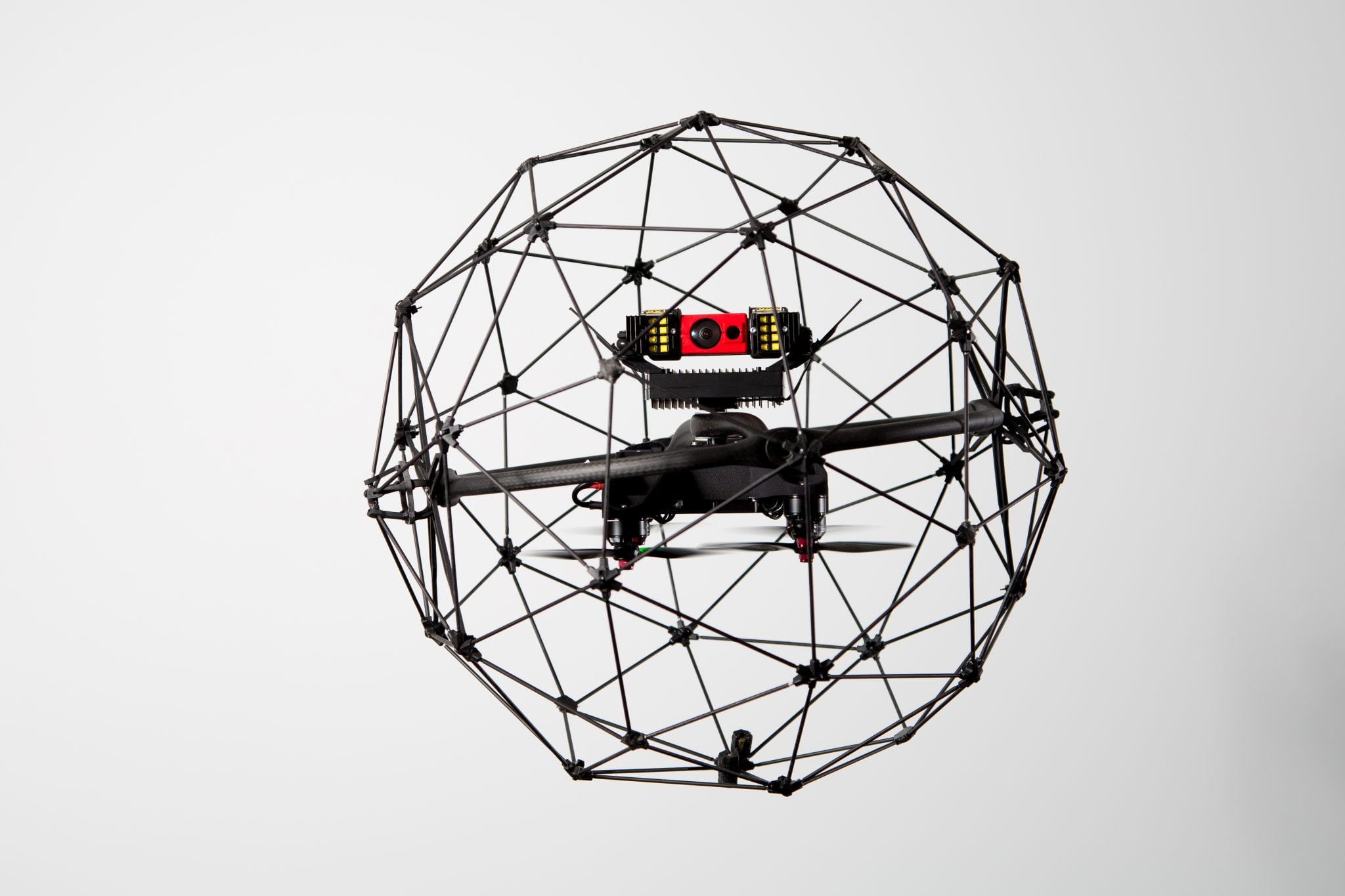The Benefits of Using Drones in Oil and Gas Inspection

Drone technology has exploded over recent years, with its use being embraced by many key industries. In the field of oil and gas, they’re particularly suited for the collection of remote visual data during the inspection of internal assets, amongst other things.
It won’t come as any surprise that the use of drones within the industry is increasing. For many years they’ve been a valuable tool for external inspections. Equip a drone with methane and optical gas imaging capability and it’s the perfect tool for detecting gas leaks, something that many operations are taking advantage of.
While drone use has increased dramatically, many have still to understand their inside capabilities. Obstacles to their use have historically involved difficulty in navigation within an enclosed space, damage to the drone if it came into contact with the structure and the issue of attaching the necessary hardware to a vehicle small and agile enough to navigate within a confined area. However, advances have brought appropriate solutions to the field, such as the Elios 2 by Flyability, that have proven a massive success for the easy collection of high-quality inspection data.
Indoor Assets that are Successfully Being Surveyed with Indoor Drones
Every maintenance manager knows the amount of work it takes to prep for a traditional asset inspection. Extended shutdown, scaffolding, rope teams, breathing apparatus… The list is lengthy and requires a tremendous amount of logistical effort, not to mention loss of revenue.
Remove the need for human entry into a confined space and the vast majority of effort disappears. Some of the places indoor drones are proving their worth include refineries, jetties, drilling ships, offshore rigs, chimneys, smokestacks and more.
It’s not just the safety and speed aspects that drone surveillance can overcome. There are many other benefits that come from taking to the air.
- Better access: Indoor drones are designed to navigate the tightest of confined spaces, getting closer to the structure and capturing images and data in far more detail than a human can. This is because these drones are designed specifically for the job in hand. Tools, such as the aforementioned Elios 2, have a protective cage that’s integral to its design. This means it can literally bump into a wall and slide along it to carry out the inspection. The high-definition images and video captured allows remote inspectors to get superior imaging from the very best vantage points.
- Increased safety: When removing the need for human access, you also get rid of practices that damage the integrity of the asset itself. For example, inspections that warrant inspectors to enter via rope access often require a hole to be cut into the structure in order to obtain entry.
- Improved visual data: Continuing to use the Elios 2 as an example, the payload of the drone allows for HD 4K video, excellent lighting features and advanced stabilisation, meaning inspectors can easily monitor areas of concern and plan appropriate maintenance.
- Proactive maintenance: Thanks to the ease of indoor drone inspection, increasing the frequency becomes something that can be scheduled into a maintenance programme. This allows for better detection of corrosion and wear, as well as an improved ability to plan repairs and maintenance to be carried out at the appropriate time. This, in turn, reduces emergency works in the case of unexpected failure and all the associated expense (and safety) issues this brings.
- Easily shared data: In conjunction with advanced software that’s specifically produced for the purpose, inspectors can share this with those who need it. In addition, the data is pinpointed to an exact spot within the asset, meaning future inspections can easily return to the same location to be reassessed.
- Monetary savings: All of the above leads to saving costs that can add up to eye-wateringly large amounts. Drone inspection typically takes a fraction of the time of a traditional inspection, and savings of up to 96% are commonly reported.
While it’s true that indoor drone inspections in the past have been more about ‘what if’, rather than returning results. It appears that this now certainly isn’t the case. Utilising custom-designed tools, such as the Elios 2, is becoming something that many maintenance teams are turning to.
With the increased data quality, savings and speed that they offer, the oil and gas industry is ripe to take advantage. And those who do so will reap the benefits. We’re not saying that the scenario of human-led internal inspection is at an end. But it appears that their days are definitely numbered…
Contact us to find out more about the Elios 2 or any of our other custom solutions, or request a quote online.
Carry on reading Is Proactive NDT Inspection the Key to Great Asset Management? to find out more.
